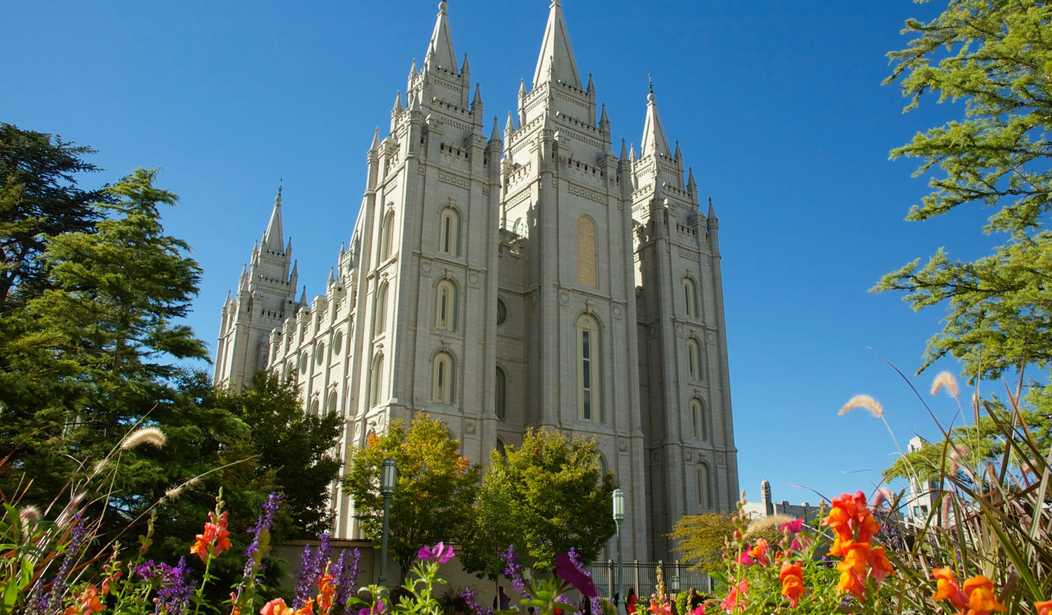On Tuesday, the Church of Jesus Christ of Latter-day Saints (commonly known as the Mormon Church) and the Boy Scouts of America (BSA) announced that they would officially part ways on the last day of 2019, bringing their relationship to an end after 106 years. The break-up had been a long time coming, as the BSA drifted into a more socially liberal direction and as the Mormon Church grew — especially outside the U.S.
While the divorce may have been predictable, it will have a tremendous impact on both organizations. The LDS Church is the biggest participant in the BSA, with approximately 425,000 Mormon youths in Cub Scouts and Boy Scouts. Mormons account for about 19 percent of the BSA’s membership, which totals about 2.3 million.
There are five aspects that help explain this historic break-up.
1. History.
The LDS Church formally partnered with the Boy Scouts of America on May 21, 1913. The church had long been exploring ways to get their boys more involved in various outdoor activities, and by January 1913, approximately 20,000 Mormon young men were involved in the BSA.
The partnership made sense for the Mormon Church on another level, however. Beginning in 1849, Mormons in Utah petitioned the federal government for statehood. The process lasted almost fifty years, partially because non-Mormons distrusted latter-day saints and firmly opposed polygamy. (The Republican Party’s first presidential platform in 1854 opposed the “twin relics of barbarism,” slavery and polygamy.)
In 1890, the LDS Church finally issued the Woodruff Manifesto, officially advising against polygamy. This move opened the doors for statehood, achieved in 1896. Even after statehood, Mormons remained distrusted, however.
The Boy Scouts of America rose to prominence very quickly. The BSA National Office opened in New York City in June 1910. By autumn, the organization had 2,500 leader applications from 44 states and more than 150,000 youth inquiries. By February 1911, the BSA was holding meetings at the White House, and decided to make the U.S. president the honorary BSA president.
Indeed, the Boy Scouts of America reached such a level of prominence that various scandals flared up, involving labor unions, Roman Catholics, and the inclusion of African-Americans.
Mormons proved their American patriotism — and gained visibility and respect — by joining the BSA.
Modern Americans may mock the LDS Church and its teachings, but by and large Mormons are today respected as moral and upstanding citizens. While some mistrust lingers, a Mormon candidate — former Massachusetts Governor Mitt Romney — came rather close to becoming president of the United States. If the LDS Church needed the BSA to overcome distrust, it no longer does.
2. Homosexuality.
The BSA made two controversial decisions regarding homosexuality in scouting. In 2013, the organization decided to allow openly gay boys to participate in the program. In 2015, the BSA opened its doors to openly gay scout leaders, with an important exception to allow church-based troops to exclude them.
In doing so, the organization forfeited a Supreme Court ruling in their favor. In Boy Scouts of America v. Dale (2000), the United States Supreme Court ruled that the BSA had a constitutionally protected right under the First Amendment to its then-exclusive membership policy. The decision rested on the BSA’s position that homosexual conduct was inconsistent with its values.
“The Church of Jesus Christ of Latter-day Saints is deeply troubled by today’s vote,” the Mormon Church announced, moments after the 2015 policy change. “When the leadership of the church resumes its regular schedule of meetings in August, the century-long association with scouting will need to be examined.”
Last May, when the LDS Church pulled roughly 130,000 boys out of the BSA’s Varsity and Venturing programs, it insisted the decision had nothing to do with the Boy Scouts’s LGBT policies and everything to do with the spiritual growth of 14-18 year-old boys.
“The BSA has always allowed the Church to operate its programs in ways that are consistent with our standards and beliefs, and they have been very supportive,” so the LGBT issues were not the primary driver in this decision.
Similarly, the LDS statement this week explaining the final divorce did not mention LGBT issues directly, but did emphasize the spiritual demands of maturing young men.
“The focus of this new approach for children and youth is to help young people strengthen faith in Heavenly Father and His Son, Jesus Christ,” the church explained. “This approach is intended to help children and youth discover their eternal identity, build character and resilience, develop life skills, participate in outdoor activities and service opportunities, and strengthen their ability to fulfill their divine roles as daughters and sons of God.”
This religious approach to scouting reflected that of BSA founder Robert Baden-Powell. “There is no religious side to the movement,” Baden-Powell said in 1920. “The whole of it is based on religion, that is, on the realisation and service of God.”
While the Scout Oath still binds a scout to “do my duty to God and my country,” BSA leaders would likely shy away from such declarations today.
The Mormon Church rejects homosexual activity as sinful and unnatural. While the organization downplays the role of LGBT issues in the split with the BSA, they likely do play a major factor.
3. Transgenderism.
Last January, the Boy Scouts of America announced it would admit biological girls, so long as they identified as boys. Shortly before this decision, an 8-year-old girl who identifies as a boy was kicked out of a Cub Scout pack and sued the BSA for discrimination.
“For more than a hundred years, the BSA, along with schools, youth sports, and other youth organizations ultimately deferred to the information on an individual’s birth certificate to determine eligibility for” gender-specific programs like the Cub Scouts and Boy Scouts, Chief Scout Executive Michael Surbaugh said in a video statement last January.
“Starting today, we will accept registration in our scouting programs based on the gender identity provided on an individual’s application,” Surbaugh announced. He also added that “we will continue to work with families to find scouting units that are the best fit for their children.”
The lawsuit, and BSA’s caving to transgender activism, followed President Barack Obama’s Justice Department’s move to redefine “discrimination on the basis of sex” to include internal sense of gender. “Sex” refers to a human being’s chromosomal makeup: males have one “x” chromosome and one “y” chromosome, females have two “s” chromosomes.” Gender identity, however, refers to “transgender” (identifying with the gender opposite your biological sex) and “cisgender” (identifying with the gender that fits your biological sex).
The Scout Oath begins, “A scout is trustworthy…” Transgender identity arguably undermines this promise, and Mormons oppose the idea that gender identity overrules biological sex.
For conservatives like Mormons, the decision to admit “transgender boys” into the Boy Scouts constituted a rejection of their values, and this decision likely contributed to the split between the LDS and the BSA.
4. Name change.
Last week, the Boy Scouts of America announced that it would change the name of its flagship scouting program to Scouts BSA, and open up both the Cub Scouts and what once was called the Boy Scouts to girls — and not just girls who identify as boys.
After 108 years, girls will be welcomed into both programs under the “Scout Me In” campaign. “Starting in February 2019, the name of the older youth program will be ‘Scouts BSA,’ and the name of our iconic organization will continue to be Boy Scouts of America,” Chief Scout Executive Michael Surbaugh explained.
Scouts BSA may allow girls an option for scouting besides the Girl Scouts, which partners with Planned Parenthood, the Women’s March, and other liberal causes. Even so, this move seems to downplay the division between boys and girls, something Mormons take extremely seriously.
Only men are allowed to serve as priests in the LDS Church, and their hierarchy is entirely male. The male-female distinction reportedly extends even into heaven. Raising boys to be men and girls to be women proves an essential task in Mormon theology.
The timing of the official separation between the LDS and the BSA seems clearly pegged to the recent name change, coming merely a week later. Even so, the Boy Scouts of America will still have separate groups for boys and girls throughout the organization. The BSA is open to girls, but that doesn’t mean girls will be camping in the same tents as the boys.
The timing may have less to do with the specific opening of the BSA to girls and more to do with the convenience of latching on to a major policy change.
5. Globalization.
The LDS Church’s official statement did not mention LGBT issues or the BSA name change, but it did emphasize the Mormon Church’s global mission.
“As a global church with millions of children and youth, we need to address diverse needs and fortify all children and youth with gospel-centered growth and learning experiences now more than ever,” the church explained.
“In the new experience, children and youth will be encouraged to focus on setting and achieving goals to develop spiritually, socially, physically, and intellectually as they seek to follow Jesus Christ. This approach is intended to reduce burdens on families, with greater flexibility to adapt to the needs of individuals and families around the world in many different circumstances,” the statement added.
After World War II, Mormonism spread across the world, doubling in size every 15 to 20 years. In 2012, there were an estimated 14.8 million Mormons, with roughly 57 percent living outside the United States. Chile, Uruguay, and several areas in the South Pacific (American Samoa, the Cook Islands, Kiribati, Niue, Samoa, and Tonga) have a higher percentage of Mormons than the United States (2 percent).
Mormonism truly is a global religion, and it makes sense that the LDS Church would create a global scouting program, given the ideological changes with the BSA.
Ironically, it appears that Mormonism has outgrown the Boy Scouts of America. After using the organization to establish its American bona fides in the 1900s, the LDS Church is breaking from the BSA to embrace a more global identity. At the same time, LGBT issues almost certainly played a large role in the decision, but the church decided to downplay those culture differences in favor of the emphasis on its global success — likely a smart PR move.










Join the conversation as a VIP Member